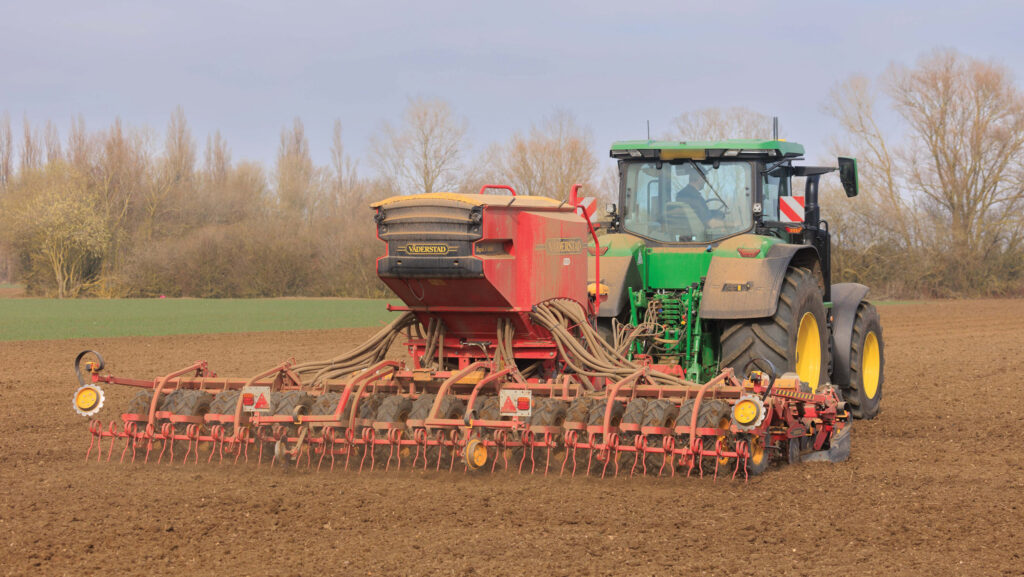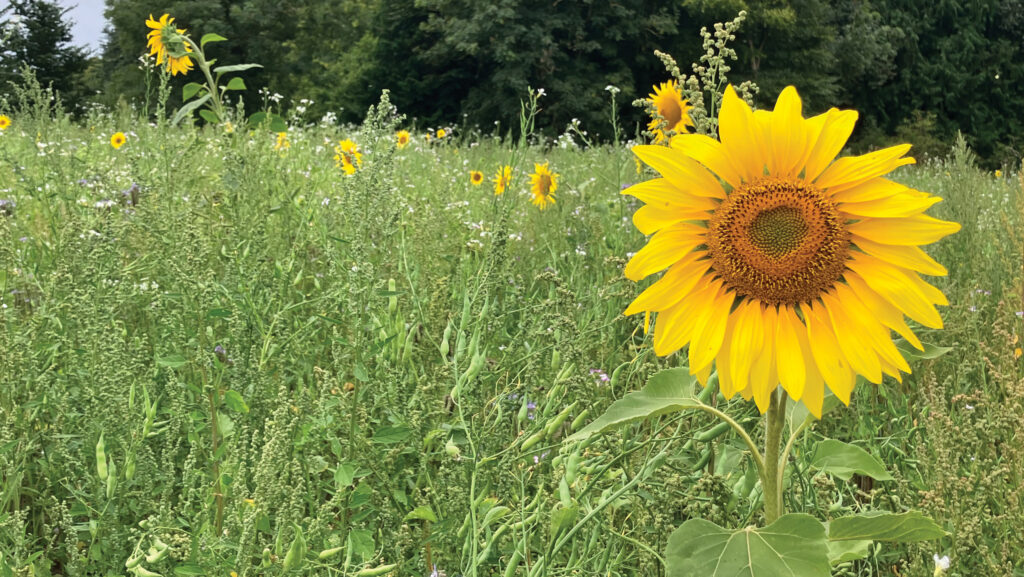How growers returned environmental schemes back to cropping
 © Tim Scrivener
© Tim Scrivener Land in environmental stewardship schemes returning to the arable rotation must be managed carefully to avoid unintended weed burdens.
We talk to two growers about how they have managed the process.
See also: How environmental schemes are affecting UK arable area
Andrew Pitts
Farm facts
Moat Farm at Whiston, Northamptonshire
- 800ha (of owned, rented and contract-farmed land)
- Varied combinable cropping rotation
- Comprehensive Sustainable Farming Incentive 2024 stewardship agreement, incorporating: companion crops on 50% of the area, including beans with winter cereals and white clover with wheat and spring oats
- No insecticide on 80% of the area (peas and winter barley may still receive an insecticide)
- Overwinter cover crops – terminated with sheep grazing or glyphosate
- Catch crops ahead of later-sown cereals
- Winter bird food mixes, field margin buffers around hedgerows and watercourses
Northamptonshire farmer Andrew Pitts has adopted a range of stewardship options at Moat Farm, and fully appreciates the need to carefully plan when bringing environmental areas back into cropping.
He avoids planting mixtures that will set seed and create a problem in the following crop.
Andrew always considers what chemistry options are available should problems arise, and considers the next two crops in the rotation, to plan potential control of any weed volunteers.
“If you’re planning on growing pulses after a cover crop, for example, do not let it get overrun with thistles.
“It may be better to grow a crop you can spray with a product that kills thistles to ensure they’re not a problem.”
Options
Options at Moat Farm include cereal/legume companion crops, catch and cover crops wild bird mixtures and field margins alongside hedgerows and watercourses.
In-field options are generally terminated with a herbicide, or sheep grazing (depending on the option), well before they set seed, to reduce the risk of volunteers in following crops.
Stewardship options where seed set is inevitable, such as the winter bird mix, are confined to non-rotational permanent blocks carefully situated to maximise their environmental benefit.
“Where we had wild bird mixtures in the ground for several years that included millet, you do get wild millet, which can be a problem to deal with if that land is going into cropping, so you’ve got to plan these things carefully.
“Talk to your agronomist and seed supplier about what you’re growing and why.”
For whole-field options, growers should think carefully about how they can use environmental measures as a “rotational tool” to facilitate a productive crop afterwards, but beware of potential risks.
He highlights one example at Moat Farm, where an in-field margin was brought back into cropping last season, yet competition from surviving grasses severely affected establishment of the direct-drilled winter barley.
“In hindsight, we should have done more to manage the mat of grass before drilling to make sure we could establish a good crop.”
Andrew recognises that maximising the benefits from cover crops or other environmental options, requires a clear idea of what you want to achieve.
“First and foremost, ask why you are growing the stewardship mix, and what you want it to achieve.
“Is it there to fix nitrogen, suppress blackgrass, improve soil structure, or anything else?”
That’s why it is important to speak to your agronomist to discuss selecting options and species that will best achieve these goals, and how to manage them properly.
“These experiences – good and bad – are all helping to inform future decisions, and make sure any new options are right for the business,” he says.
David Craig
Farm facts
Peter Moulds (Farmers)
- 245ha arable farm
- Cropping includes winter wheat, oilseed rape, beans (replaced by peas in 2025-26) and barley
- Mixed soil type
- Flexible cultivation policy, mainly direct drilling and minimal tillage, with some ploughing if required
- Mid Tier/SFI stewardship options include overwinter cover crops, winter bird food mixes, legume fallows, and companion crops
Deep-rooting weeds posed a significant challenge for land coming out of a winter bird food mix and legume fallow Mid-Tier stewardship options on a Lincolnshire farm last year.
David Craig, farm manager at Peter Moulds (Farmers), near Lincoln, had a couple of whole fields and some in-field strips of winter bird mix and legume fallow that he decided to bring back into cropping once the agreement expired, and he was no longer receiving payment for.
Weeds
The main issue was deep-rooting weeds, namely thistles, and lucerne in the legume fallow.
A robust herbicide programme and careful management has helped avoid any lasting impact.
Mixes were sprayed off with 2,4-D + glyphosate in mid-August, and left for six or seven weeks for biomass to die back before direct-drilling winter wheat.
“We had to give a full herbicide programme to control. Straight glyphosate just isn’t effective on broad-leaved, deep-rooted weeds,” notes David.
“We’ve tried a small strip before and it just knocks them for a couple of weeks.
“Then, as soon as you get a bit of rain, they’re green and growing again.
“So, it’s one area you can’t really scrimp on,” he says.
David has found that covers can sometimes dry soils out significantly, limiting cultivation options.
“Given the amount of trash, we didn’t fancy ploughing it, plus there’s a lot of goodness in that material.
“We took the option to direct drill the following wheat crop, increasing the seed rate by 20kg/ha on a few of the more challenging wet patches to improve weed competition.”

© MAG/Emma Gillbard
Weed treatments
The pre-emergence programme was based on Avadex (tri-allate), plus aclonifen and flufenacet.
This was followed by a post-emergence flufenacet late autumn top-up, then florasulam + halauxifen with the T1 fungicide in the spring.
“Other than odd patches where a few weeds came through, it’s done a pretty decent job of cleaning everything up.
“The wheat we harvested this year has done well, so it’s an approach we’re going to take again with other land coming out of legume fallow and winter bird mix options.”
Uncertainty over future of environmental funding remains
Details about the future of environmental funding remains very much up in the air.
The government says it has committed £2.7bn a year to support sustainable farming and nature recovery in 2026-29.
However, demand for that money is likely to be extremely high as many of the first Sustainable Farming Incentive (SFI) agreements that commenced in 2022 will be coming to an end.
Add to that a significant number of Countryside Stewardship (CS) agreements are finishing their five-year agreement.
“There are a predicted 4,400 Mid Tier CS agreements due to expire over the next year, and with no other funding opportunities other than the SFI, there’s likely to be high demand for funding,” says Georgina Wallis, head of environmental services at Hutchinsons.
Details about SFI 2026 are still not confirmed, but Georgina suggests an update from Defra is likely this year, possibly with more detailed information about the scheme and the options becoming available in the new year.

